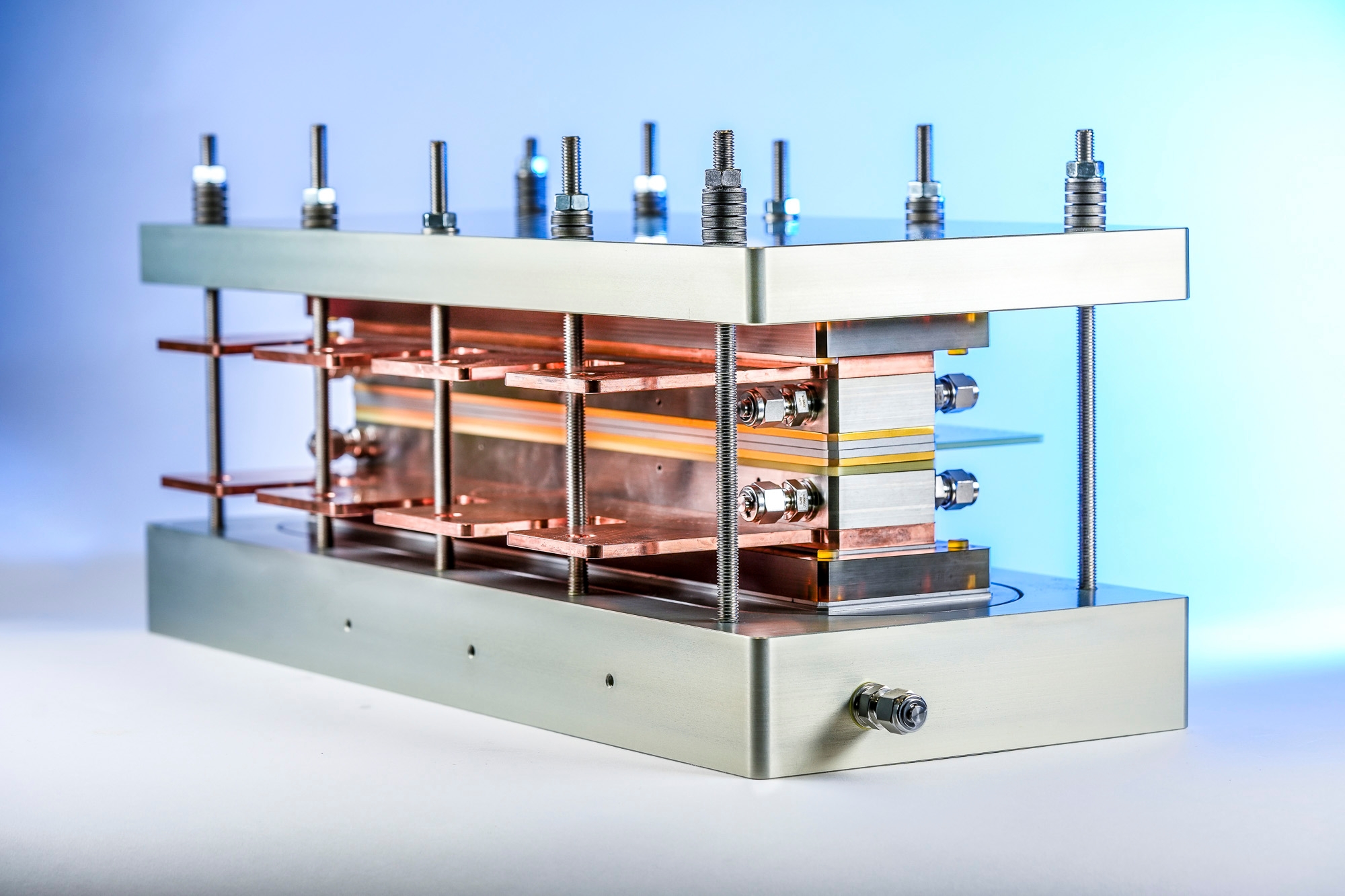| Duration: | 04/2021 - 05/2025 |
| Contracting Authority/Sponsors: | Bundeministerium für Bildung und Forschung (BMBF) / Projektträger Jülich (PTJ) |
| Project Partners: | Schaeffler Technologies AG & Co. KG Fraunhofer IMWS Fumatech BWT GmbH Helmholtz-Institut Erlangen-Nürnberg (HI ERN) Heraeus Deutschland GmbH & Co. KG Karlsruher Institut für Technologie IAM-ET/ISTM KCS Europe GmbH RWTH Aachen IOT TU Ilmenau |
| Website: | |
| Project Focus: |
StacIE: Stack Scale up – Industrialization of PEM Electrolysis

![BMBF_CMYK_Gef_M [Konvertiert]](/en/research-projects/stacie/jcr:content/contentPar/sectioncomponent/sectionParsys/textwithinlinedimage/imageComponent2/image.img.jpg/1711013596416/BMBF-gefoerdert-2017-en.jpg)
The aim of the StacIE project, which is part of the H2Giga hydrogen lead project, is to continue developing PEM electrolysis technology, both at component level and at subsystem level. The focus here is on increasing the efficiency and service life of the stack system and the individual components. In addition, manufacturing costs are to be reduced and production processes suitable for series production are to be further developed. Fraunhofer ISE is focusing on the analysis of the flow-conducting components with ex-situ investigations, the development and analysis of a newly designed along-the-channel PEM electrolysis test cell and the characterization of the short stacks developed in the project.
The global market for PEM electrolysis is expected to grow significantly over the next 10 years. Nevertheless, this technology still has great potential in terms of plant investment costs (EUR/kW) and service life. A reduction of more than 50 % is considered to be one of the main prerequisites for the competitive production of green hydrogen using PEM electrolysis.
The development of stack technology, which is the core component of an electrolysis system, is considered to make a significant contribution. The objectives of the StacIE project are the further development of stack technology, both at component level and at subsystem level, to achieve higher efficiency (>75%), a longer service life (>80,000 h), lower manufacturing costs and the further development of a production process suitable for large-scale production in terms of size and output volume (GW p.a.).
Technological areas of development include structuring the bipolar plate, producing better porous transport layers (PTLs), catalyst coatings on the membrane or PTL, corrosion-resistant protective layers and automated stack assembly. To this end, a consortium was formed with partners from industry and science in Germany. The partners have proven expertise and resources for testing and producing the components in elementary areas of stack technology - and thus fulfill a key function for a future supply chain in Germany. As a result, this research project should help to strengthen Germany's competitiveness in terms of the technology and production of PEM electrolysis stacks and their components.